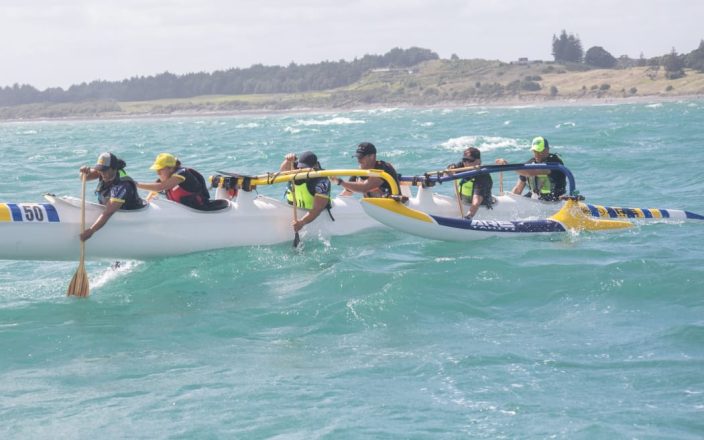Dalawang opisyal ng pulisya sa Taranaki, sina Brad Huntly at Simon Howard, ang ginagamit ng kanilang mga ugat sa kultura upang makatulong na mabawasan ang krimen sa mga kabataan ng Māori. Lumikha nila ang Te Hapai Hoe, isang libreng programa ng waka ama na nagtuturo ng kultura, wika, at talakawan ng Māori sa isang buong setting ng paglulubog. Nag-aalok din ang programa ng praktikal na tulong, tulad ng pagsasanay sa lisensya sa pagmamaneho at mga kurso sa first aid.
Nabanggit ni Huntly, na nakikipagtulungan sa mga kabataan, na madalas na lumilitaw ang Māori sa mga istatistika ng krimen. Ang isang ulat sa Hunyo mula sa Ministry of Justice ay nagpakita na ang mga kabataan ng Māori ay nahaharap sa aksyon ng pulisya nang higit sa dobleng rate ng iba pang mga kabataan.
Sa pamamagitan ng Te Hapai Hoe, nais nina Huntly at Howard na baguhin ang mga negatibong uso na ito. Si Huntly, na nagmula sa mga tribo ng Māori na si Ngāi Tahu, Ngāti Mutunga, at Te Atiawa, ay gumugol ng pitong taon bilang isang guro at nakita ang kanyang mga mag-aaral na nakikipaglaban sa mga isyu sa bahay. Nagbigay inspirasyon ito sa kanya na pagsamahin ang kanyang mga hilig para sa pagtuturo, trabaho ng pulisya, at pagbabad upang lumikha ng inisyatiba.
Nilalayon ng programa na matugunan ang parehong pisikal at espirituwal na pangangailangan ng mga kabataan ng Māori sa pamamagitan ng waka ama, na nag-uugnay sa kanila sa kanilang kultura. Nakakuha sila ng halos $30,000 para sa isang de-kalidad na canoe mula sa Tahiti at nakakuha ng isang puwang sa pamamagitan ng Port Taranaki sa tulong mula sa lokal na iwi.
Naniniwala si Huntly na ang lokasyon ay nagbibigay ng isang kalmadong kapaligiran para pagalingin ang kabataan. Sinabi niya, “Para sa Māori, dapat maging natural ang pagbabaod. Ginagamit namin ang waka para sa pagtuturo at pagpapagaling.” Nakatanggap ang programa ng malakas na suporta mula sa iba pang mga opisyal ng pulisya, kabilang ang dating Deputy Commissioner na si Wally Haumaha.
Nagsimula ang Te Hapai Hoe noong 2020 ngunit kamakailan lamang ay nakakuha ng momentum dahil sa mga pagkagambala sa COVID-19. Hindi tulad ng mga kontrobersyal na boot camp na istilo ng militar na ipinakilala ng gobyerno, na mayroong maraming mga kalahok ng Māori, pinipilit ni Huntly na ang mga kabataan ng Māori ay nangangailangan ng mga sumusuporta na aktibidad at pag-ibig, hindi ma
“Hindi tumutugunan ang mga bootcamp para sa Māori; ito ay parang isang mabilis na pag-aayos,” sabi niya. “Ang Te Hapai Hoe ay isang pangmatagalang solusyon. Ang layunin namin ay itaas ang ating mga kabataan at magbigay sa kanila ng gabay at pagkakataon.”





























































